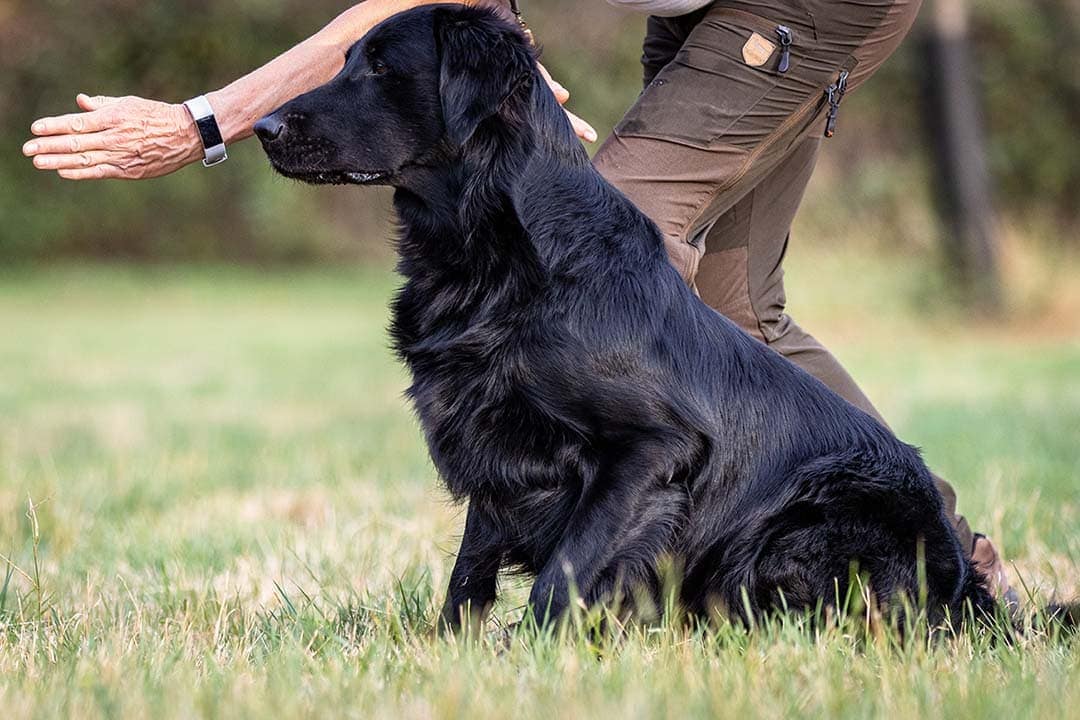Some dogs learn differently than others – just like people.
Several training methods have popped up to suit different dogs. Many of these are entirely valid methods – but others are less-than-stellar options.
Knowing which training methods work and which don’t is essential. When deciding which professional training to use or what training book to purchase, your first question should be the training method they employ.
Below, we’ll explore some of the most common training methods.
The 7 Proven Methods For Dog Training
1. Alpha Dog Training
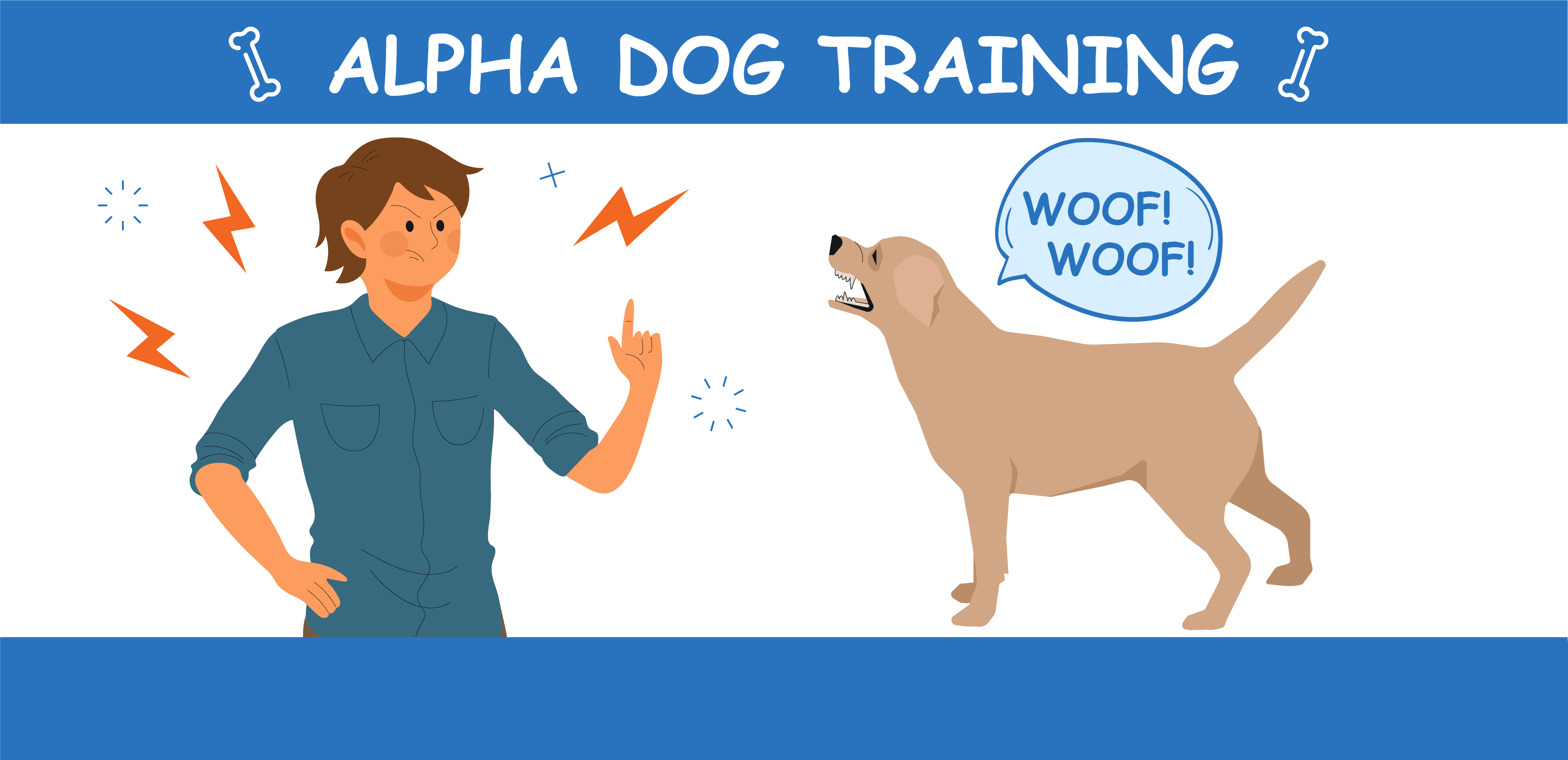
Alpha Dog training was once the most widely utilized training method. It’s also called dominance training, as it is based around exerting dominance on your dog.
This theory popped out of a study done on captive wolves. Schenkel observed wolves in an artificial, captive setting and concluded that wolves fight for dominance in a pack structure. There are submissive wolves and a single alpha wolf who rules over all others.
This theory was later applied to dogs, though there wasn’t a study done on dogs in particular.
However, this theory was later debunked. Firstly, the wolves in the original study were not in a natural setting. He studied stressed, unrelated wolves in a contained area – not an environment for instincts and natural behaviors to flourish.
Furthermore, dogs are not wolves. They have evolved next to people for thousands of years. In many ways, they are incredibly different from wolves – including in their behavior and physiology. Assuming that wolf behavior automatically applies for dogs doesn’t work.
Alpha dog theory involves a variety of techniques, including the “alpha roll” and physical correction. Many of these can lead to serious physical injuries, such as back problems. They can also needlessly stress out your canine – especially if they are sensitive.
Many dog trainers are moving away from this training method. The theory behind it has been debunked, and it doesn’t work very well. There is little reason to choose a trainer that uses this technique.
We highly recommend choosing a science-backed technique instead.
2. Science-Based Dog Training
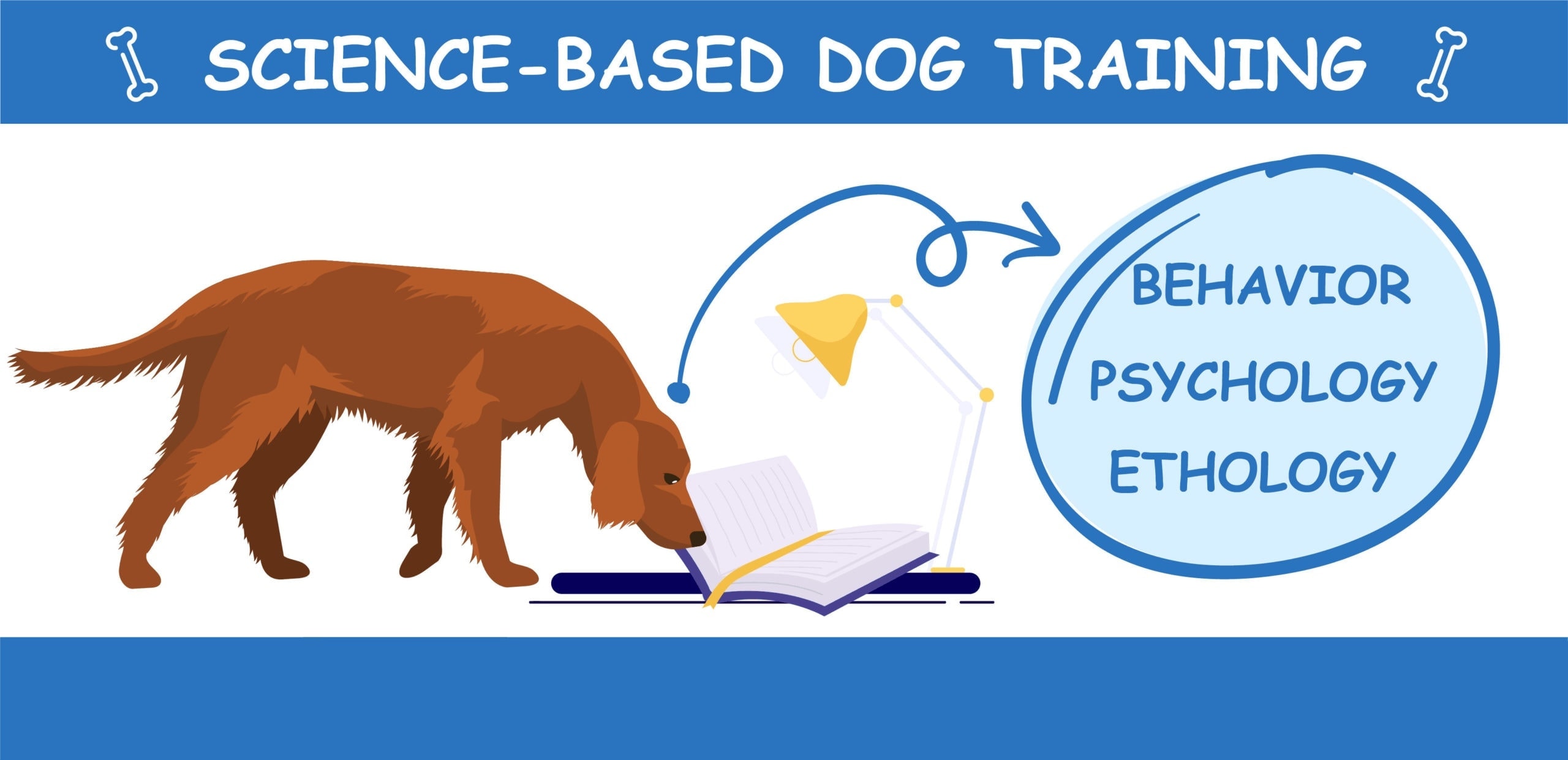
Science-based training utilizes new science into canine behavior to achieve the best training possible.
Because this method relies heavily on science, it is changing all the time. When new science comes out, trainers and books following this theory may have to change too. What we know about dogs is constantly changing – causing this method to change as well.
It is difficult to define this method because it is constantly in flux. However, any trainer or book that uses the latest scientific method may fall into this category.
Many popular training methods are based on science.
The difference between a science-backed method and science-based training is that those who learn a particular method stick with that method – even when science may point to a new way. Science-based trainers are stuck with a particular method, allowing them to change to match the new evidence.
This is much more of a mindset than a distinct training method. There isn’t a set of techniques or methods that fall into this category. Instead, the emphasis is on keeping up with the current research.
Keeping up with all the scientific information can be difficult. Books cannot be changed after they are published, making it difficult for them to take the newest information into account.
However, learning about the new scientific evidence in the field is always a good thing. Even if you don’t base your method solely on science, we recommend staying updated.
3. Positive Reinforcement Training

Positive Reinforcement is by far the most popular training method today. After alpha dog theory was debunked, many trainers went back to the drawing board. Upon reviewing the scientific evidence on dog behavior and training, positive reinforcement training is what they came up with.
Most modern trainers who use science fall into this training category.
The key to this method is quite simple. Rewards are used any time the dog performs a command correctly. Usually, this comes in the form of a treat.
However, some dogs are more play-driven than food-driven. Toys and games may be utilized in these cases. Sometimes, attention and petting are enough for some dogs.
The key is to discover the dog’s favorite thing and utilize that as encouragement. The dog will learn that good things happen when they perform the command – increasing the odds of them performing it in the future.
Typically, owners love this method because it keeps their relationship with their dog in mind. Unlike alpha dog theory, you aren’t scaring or hurting your dog. Training time becomes fun and rewarding for both of you.
A significant step of this method is slowly removing the need for treats. Usually, this is done by reducing the number of treats given until it reaches zero. This leaves you with a dog that performs commands happily without the need for a treat.
4. Clicker Training
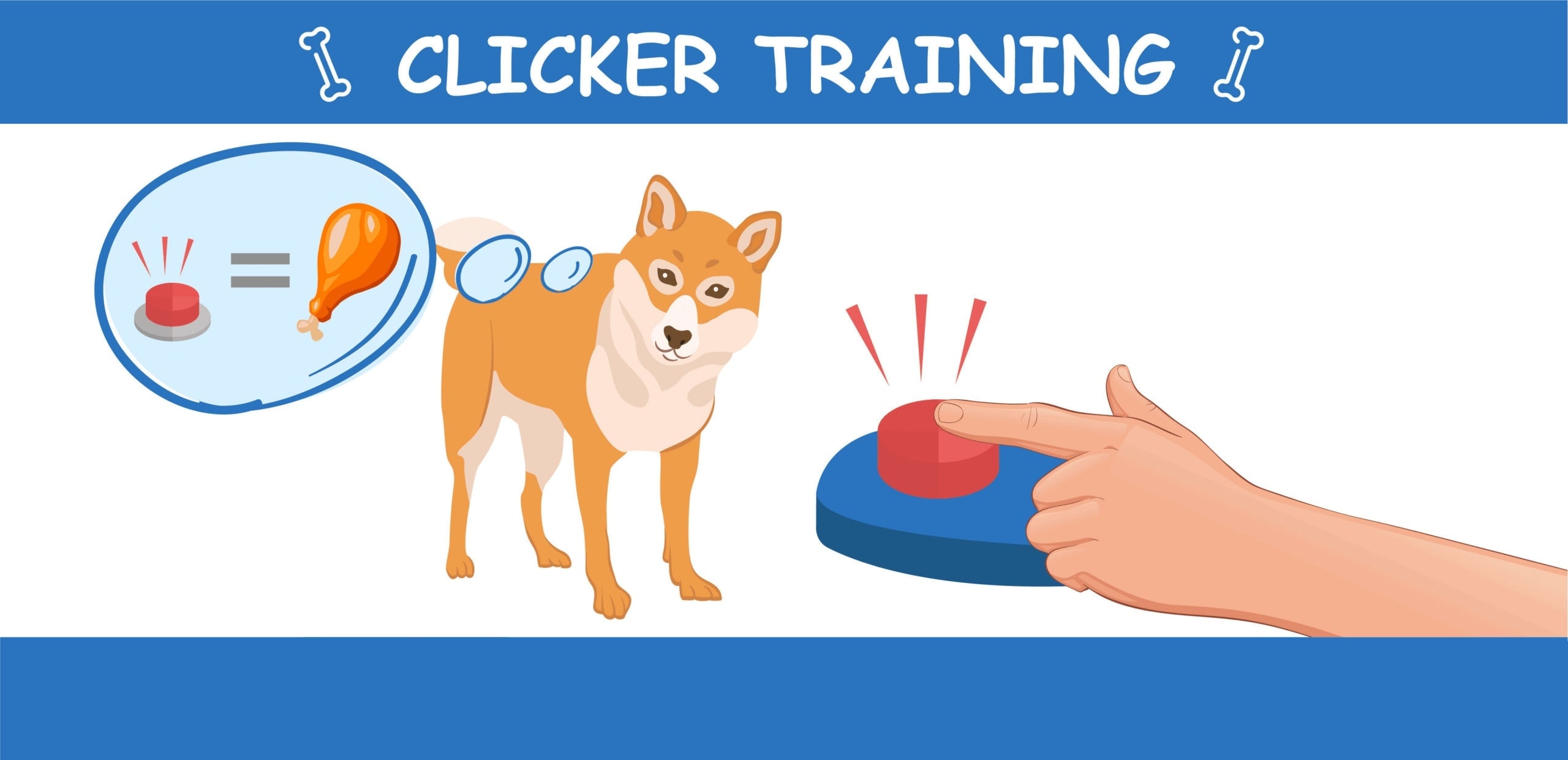
In many ways, clicker training is a subset of positive reinforcement training.
It runs off the exact science and key concept: dogs learn best when trained with rewards. However, what the reward consists of is a bit different.
At the beginning of this training process, dogs are taught to associate the sound of a clicker with something positive – usually treats. This process is straightforward: the owner clicks the clicker and then gives the dog a treat.
After a few sessions, the dog associates the clicker with good things – and likes the sound.
Then, the use of the treats is slowly phased out. The dog is trained like usual, but the sound of the clicker becomes the reward. The sound itself becomes the reward, as the dog has started to associate it with happy things.
Many people like this method because it eliminates the need for treats. However, it does take an extra step since the dog needs to associate the clicker with positive feelings.
The only major downside of this method is that you need a clicker – but these are incredibly inexpensive.
5. Model Dog Training

In Model dog training, the dog being trained observes a second dog completing the tasks and getting a reward. The idea is that the dog will learn through the act of observation.
This method was initially used to train parrots – not dogs. It is one of the few methods to be directly tested on dogs, though, and was proven effective.
In this study, they were using models to teach dogs new words. However, it can theoretically be used to teach a dog anything.
The benefits of this method primarily lie in that it can be used to teach complicated tasks quickly. For instance, dogs can learn the names of objects with some ease using this method.
However, another canine is required to do the teaching. Most people don’t have access to a fully trained dog, which makes this method largely impractical.
There is also a lot of repetition involved, which is time-consuming. You need regular access to a wholly trained dog – not just once for a few repetitions.
For the most part, this method is only used for canines being trained as service animals – not everyday tasks. It is excellent for complex commands but probably overkill for simple tricks.
6. E-Collar Dog Training
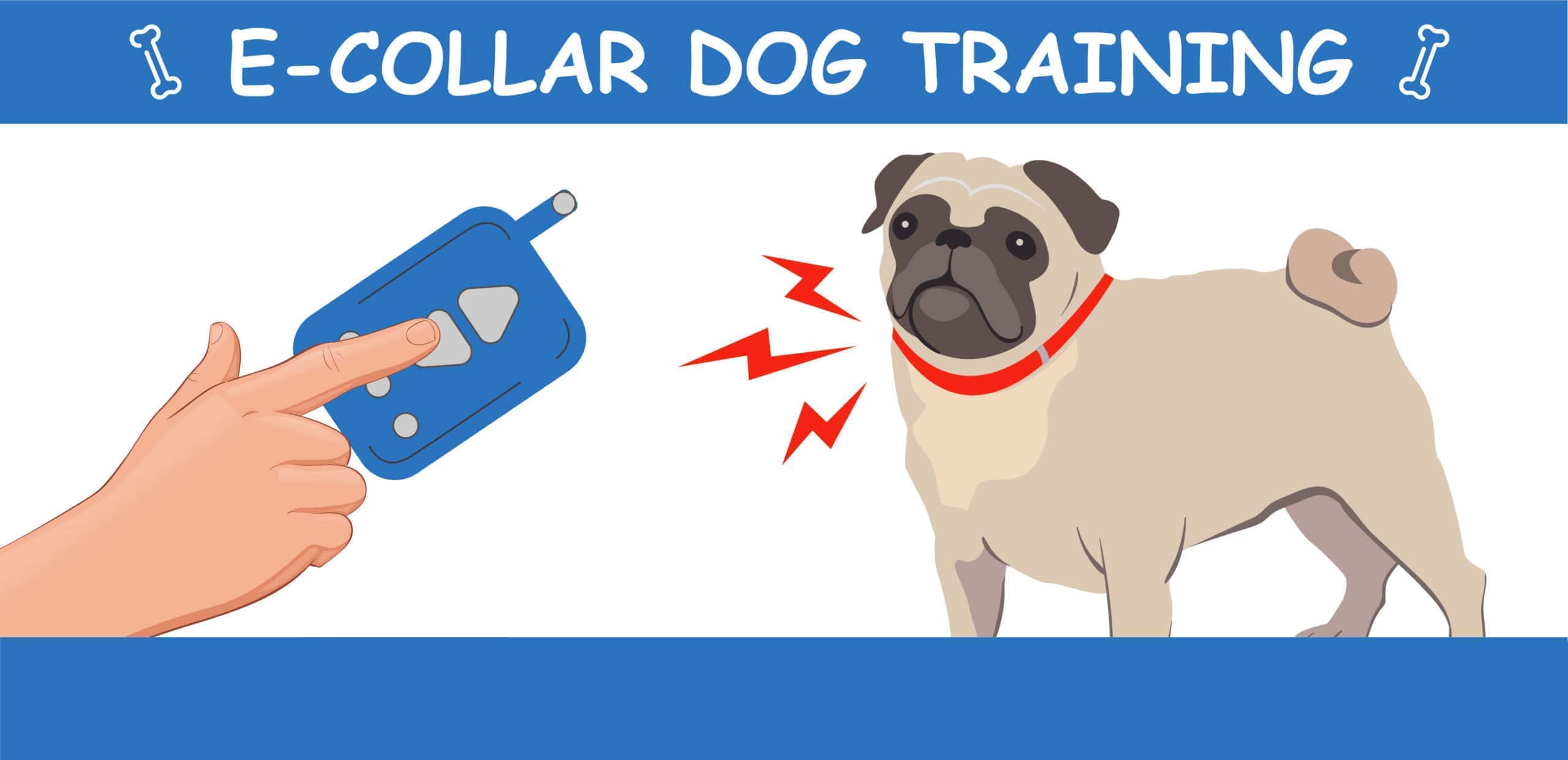
E-collar training is quite controversial. The basis of this technique is using an electric collar to shock a dog if they do not perform the task correctly. Some collars produce a simple vibration or a citronella spray – which irritates a dog’s senses.
The main problem with this training technique comes from an over-reliance on negative reinforcement. The dog may learn what they aren’t supposed to do – but the method doesn’t directly teach the dog what they should do.
For this part of training, the owner will have to switch to another method altogether. The e-collar can’t be used for any sort of positive reinforcement, after all.
Some dogs don’t respond well to e-collar training. They may become frightened or shut down entirely upon receiving the shock. Fearful dogs do not learn very well, which can get in the way of training.
Scientific research has also shown e-collar training to be less effective than positive Reinforcement. While it did work for some dogs, positive reinforcement training worked equally as well or better. Researchers were unable to recommend e-collar training based on their data.
Another study found there to be “great welfare concerns” when e-collars were used. Dogs with the collars exhibited stress-related behaviors more often and were less likely to interact with their environment.
There is one circumstance where vibration e-collars may be helpful – deaf dogs.
The main training concern with deaf dogs is that they cannot hear a recall command and cannot respond to it. This can be a significant safety concern. Plus, it also makes it harder to give your dog any hand commands if you can’t get them to look at you.
A deaf dog can learn to look at its owner when the collar vibrates, allowing it to work effectively as an attention and recall command. After the dog is looking at the owner, other commands can be given with hand gestures.
It is important to note that we’re discussing the vibration function purely – not actual electrical shocks.
7. Relationship-Based Dog Training
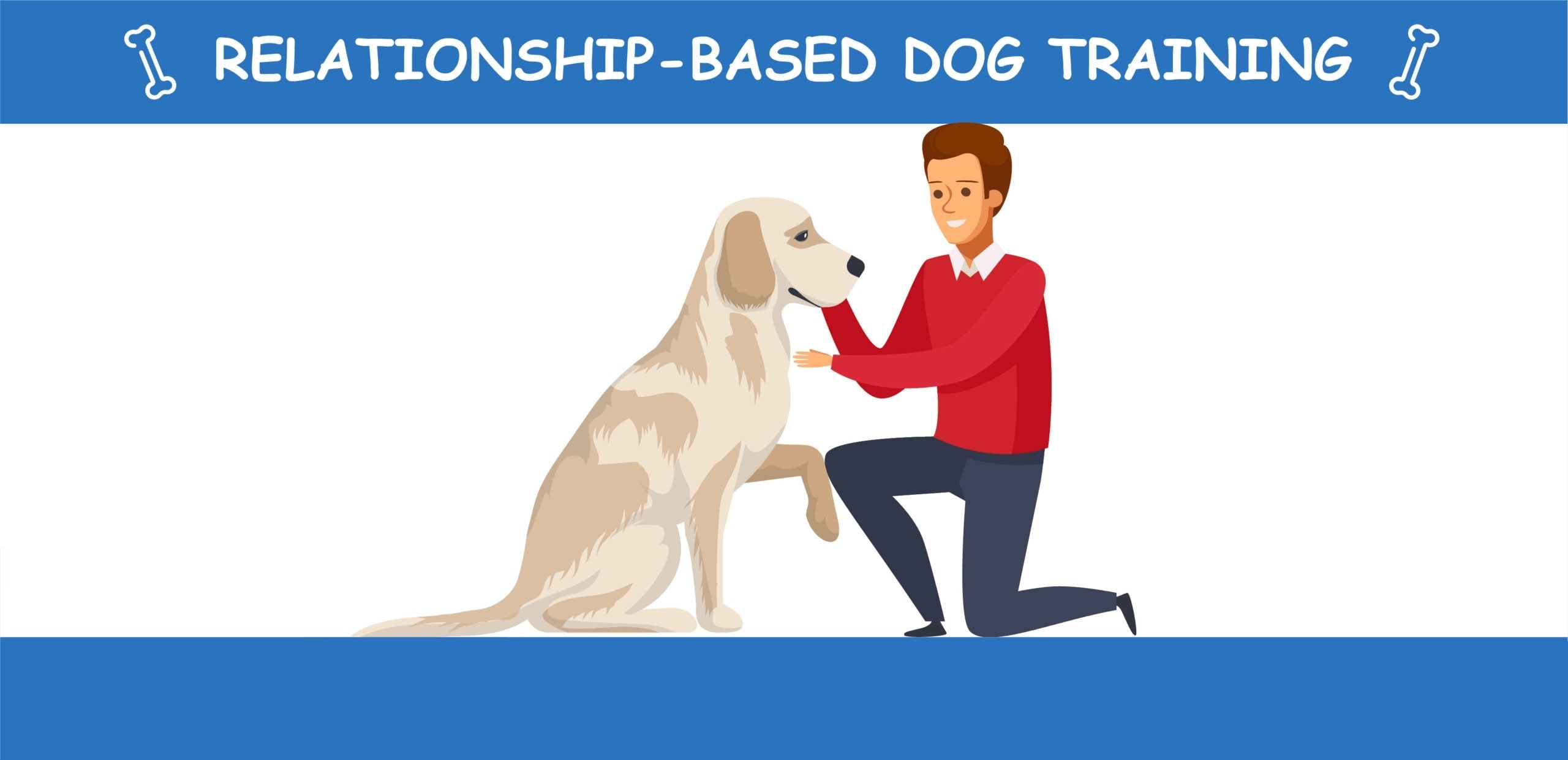
Relationship-Based dog training is more of a mindset than an actual training method. It involves taking your dog’s feelings into account during training. This method recognizes that dogs are sentient beings in their own right and focuses on setting them up for success.
The main goal is to teach the dog easy, digestible commands and slowly work up in difficulty. Commands are first taught in distraction-free areas when the dog is alert. You wouldn’t try to teach a hungry or anxious dog.
Once the dog has mastered the basics, the difficulty would be increased until the dog can perform the command anywhere.
Owners are encouraged to learn their dog’s body language so that they can communicate effectively. Training is a team exercise – not something the owner does to the dog.
If the owner can determine what the dog is feeling, they can use it to make their training more effective.
Obstructions to success are carefully considered, such as distractions in the environment. A key to this method is setting the dog up for success – you want everything perfect at least the first few times to ensure that your dog follows through with commands.
This method is an excellent option for many canines. Its focus on setting the dog up for success helps ensure that training is as stress-free as possible for both parties. You learn not to expect too much of your dog, and your canine feels like a constant success.
However, many of the tenants of this method should be followed by trainers anyway.
For instance, you should never expect a dog to perform a command in a high-stress environment until they’ve mastered it in a low-stress environment. No matter what method you use, it’s improper to throw a dog in a situation where it can’t perform.
Learning dog body language is always helpful – no matter what method you’re using. Anything that may keep a dog from listening to the command should be dealt with before the training session starts. You can’t expect an injured or hungry dog to listen very well!
We highly recommend owners and trainers look at this method – if only to get a concrete understanding of the key tenants. However, this method is positive reinforcement training with a different focus. In practice, it is very similar.
Combining the two approaches can be extremely helpful, especially if your dog is having difficulties.

What is the Best Type of Training for Dogs?
Out of the seven methods we’ve discussed, several can effectively be used with most canines.
The most common effective method is positive reinforcement training. Most up-to-date trainers and owners currently use this method. It’s straightforward to accomplish with some basic knowledge. It doesn’t require any fancy equipment and can quickly be done in the home.
Most other effective methods are based on this one. For instance, clicker training is nearly identical to positive reinforcement training – but you’re using a clicker instead of treats.
Relationship-based training provides an exciting mindset, but it works effectively identical to positive reinforcement training in practice. Dog owners interested in dog body language and keeping training sessions stress-free may look into this method.
We do recommend that they check out positive reinforcement training as well. The two methods can be extremely useful when used conjunctively. Combining these approaches may work well for canines with behavioral issues.
Scientific training can be helpful. It will likely be effective, as it is based on scientific evidence. Like most other methods we’ve discussed, this will work similarly to positive reinforcement training in practice. Some trainers may use slightly different techniques based on the scientific research they’re familiar with.
Because scientific training is always training, it may move further away from positive reinforcement training in the future.
Model training can be beneficial for teaching complex tasks, but it is mainly for dogs in specialized training programs. It requires the use of a fully trained dog, making it impractical for many owners.
This method is primarily used for training service dogs.
The method that works best for you and your dog may vary. Some owners may get a lot out of relationship-based dog training, while it will look precisely like positive reinforcement training for others. Some owners may find clicker training easy, while others will prefer treats instead.
If your dog is undergoing specialized training, model training may be helpful. Otherwise, you may not get much use out of it.
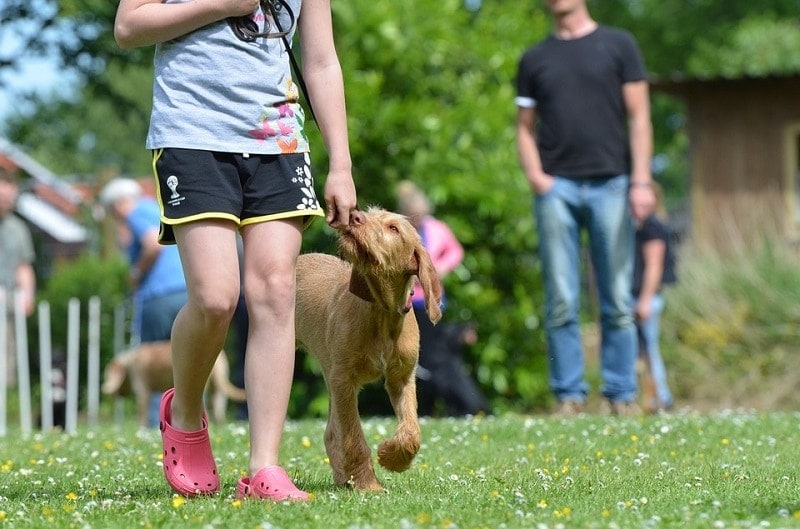
How Do You Choose the Right Dog Training Method?
In most cases, we recommend that dog owners start with positive reinforcement training. This method is adequate for most dogs and easy for owners to learn. Most professional trainers also use this method, making it easier to find appropriate classes in your area.
Of course, some dog trainers are still using the debunked alpha dog theory – which is less effective than other methods. For this reason, we recommend asking a trainer what method they use before signing up for classes.
After you’ve effectively started positive reinforcement training, you may want to consider adding in other approaches. This will depend on your goals and your dog’s needs, as well as other factors.
Your Dog’s Needs
Every dog is different. For the best results, their training needs to be personalized to them.
If a dog is obese and has trouble maintaining an appropriate weight, positive reinforcement training may not work quite as well. It utilizes a lot of treats, which some dogs just can’t deal with. In this case, clicker training maybe your best option.
While it does use treats in the beginning, they are quickly phased out.
Deaf dogs will likely benefit from an e-collar with a vibrate function. That doesn’t mean you should use e-collar training exclusively – the shocks are a flawed method for most dogs -, but the vibration function can be beneficial for dogs that can’t hear you.
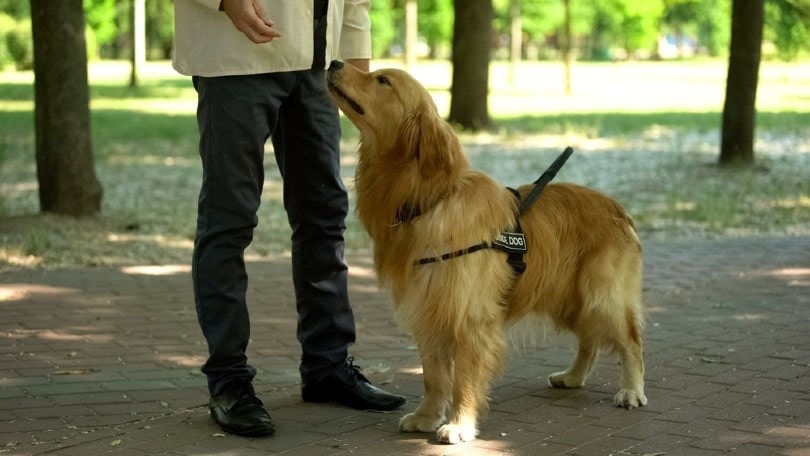
Your Interests
Some dog owners are more interested in training than others. There is a lot of theory out there. You don’t need to know all the whys to know how to train a dog, though. A good trainer should work you through the steps of positive reinforcement training without explaining all the theories behind it.
However, some dog owners are very interested in the hows and whys of dog training. Looking into relationship-based training may be helpful in this situation. A lot of this method is theory – the practical applications are most positive reinforcement training.
However, the added knowledge of dog body language and how to adapt the environment to training can be beneficial. Many owners will love learning about it – and it may have a positive effect on your dog’s training.
This method is also helpful for canines with behavioral problems. Even if you aren’t particularly interested in the ins and outs of dog training, having some in-depth knowledge of body language can be helpful when training a troubled dog.
Your Goals
Positive reinforcement training and similar methods are excellent for teaching most things. However, there are some cases where a different method may be more helpful.
Complicated training and commands may be tackled easiest through Model training. Dogs seem to pick up on word-learning faster this way – which isn’t surprising given that the method was initially developed to teach parrots words.
For dogs that are undergoing therapy or service dog training, Model training is often used.
This almost always requires the dog to be attending a school, though. A fully-trained dog is needed to show the untrained dog commands. Most dog owners don’t have a fully-trained dog sitting around, but most dog training organizations do.
Relationship-based training may be beneficial when handling an anxious dog. If your goal is to desensitize your dog to anxiety-inducing noises, you probably want to use a gentle training technique – and learning to read your dog’s body language is always a plus. Alpha dog training would not be helpful in this situation.
After all, you can’t scare your dog out of being scared!

Resources Available
Some dog training methods are more widely practiced than others. Positive reinforcement training is probably the most widely available option. Therefore, many pet owners may find this one the easiest – simply because many resources are available.
Model training may sound like a great idea and be scientifically proven – but the resources aren’t there for many dog owners.
A clicker is required for clicker training. While these are incredibly inexpensive, you can’t start until you get one.
Relationship-based training can be exciting and helpful for some dogs. But you’ll likely need to spend a lot of time researching and reading before you can use it.
Choosing a Quality Dog Trainer
It is widely recommended that new dog owners utilize the services of a professional when training their dogs. After you’ve trained a dog or two, you may not need a trainer anymore.
However, they can still be helpful for dogs with behavioral problems or switching their training method.
Choosing the right trainer for your needs is essential to make the most out of your training. A good trainer will jumpstart your training, but a poor trainer can potentially sabotage your efforts.
Method Used
Different trainers use different methods.
Preferably, you want to find a trainer in your area that uses the same training method you want to employ. Don’t go to a trainer that uses alpha dog theory when you’re interested in positive reinforcement training.
Not only will this be unhelpful, but you may have to unlearn some techniques later.
Of course, some techniques are similar enough to be used interchangeably. For instance, even if you don’t particularly care about using a clicker, clicker training and positive reinforcement training can go hand-in-hand.
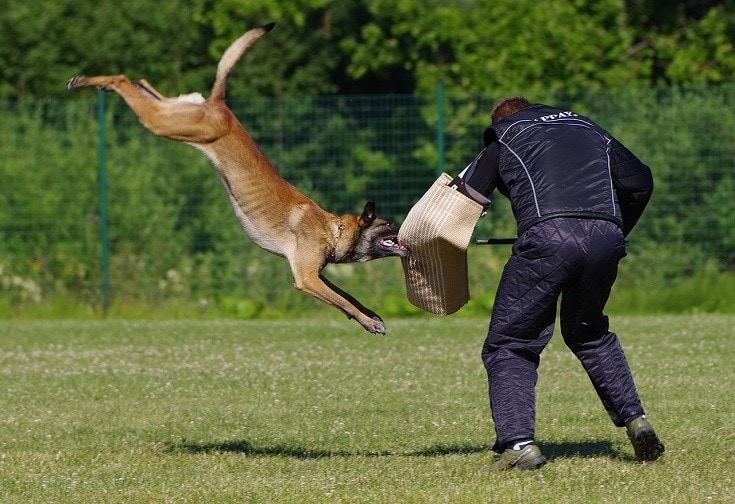
Trainer Accreditations
Accreditations are a bit complicated. There is no overarching organization that certifies trainers. Instead, there are many smaller organizations.
Some of these only require the trainer to pay a fee to “accredit” them. Others require the trainers to take a course and pass an exam. Some organizations have codes that the trainers must abide by – others don’t.
Just because a trainer claims to be accredited doesn’t make them better than another trainer necessarily. Be sure to research the organization that accredited them.
Trainer Reviews
If possible, be sure to ask around to get reviews on the trainers in your area. Google and Facebook are solid options for this, as they tend to include reviews for local dog trainers.
Of course, you can’t always trust the star amount itself. Some dog owners will rate a trainer lower because they don’t use the method they were hoping for.
Be sure to read the reviews and understand why the trainer was rated lower – don’t take the star rating at face value.

Session Format
The large majority of dogs would benefit most from group lessons. These provide training information and allows your canine to socialize – an often-overlooked part of training. They are also cheaper, especially when compared to individual classes.
However, individual classes may be helpful for canines that don’t get along well with other dogs. If your dog has severe behavioral problems, it may be best to start with one-on-one classes and move to group lessons later.
Conclusion
There are seven main dog training methods out there – though there are likely dozens of other lesser-known options as well.
Some of these are backed by science, and others aren’t. For instance, alpha dog training is based on a debunked theory involving wolf behavior, while science-backed training is wholly focused on what the science has to say.
You may use different methods at different parts throughout your dog’s life. You don’t necessarily have to choose one method and stick to it, especially when it comes to very similar methods.
However, we do recommend doing your research before utilizing any method on your canine. After all, you don’t want to pick one that may end up doing more harm than good.
Featured Image Credit: Sven Mewis, Shutterstock
